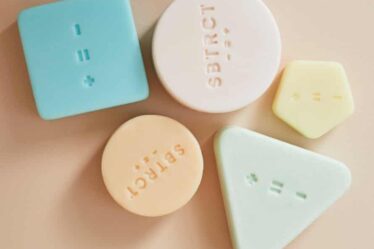Last year, in a rare example of luxury rivals joining forces, LVMH, Cartier and Prada united to form Aura, a consortium dedicated to mounting shared solutions for brands to leverage emerging blockchain technologies. The group hopes that blockchain’s tamper-proof and decentralised database will help brands fight counterfeits, reassure consumers and create a more sustainable industry by making it easier to track products and materials.
A year after the consortium was formed, the platform is now expanding its remit to help brands get in on the non-fungible token (NFT) craze.
Aura has built an NFT gifting solution that will help its member brands issue unique digital “twins” to consumers alongside the physical products they sell, the group’s general secretary Daniela Ott said. Aura has also developed a white-label service for brands to help them issue NFTs through their e-commerce flagships.
At a dinner hosted by Aura in Paris Tuesday, executives of member brands spoke about where they saw the role of blockchain and NFTs headed in the luxury industry.
“We see NFTs as a tool … that can generate interest, can generate a new ecosystem, and also, of course, some extra revenues for our brands,” said Stefano Rosso, board member at Diesel- and Margiela-owner OTB, which joined the consortium last October. Rosso has since founded a unit within OTB dedicated to fashion in the metaverse, called BVX.
Aura’s expansion into NFT shows the consortium keeping up with the technology zeitgeist, as awareness for digital artworks and collectibles linked to blockchains has exploded in the past year.
The group’s members also pointed to progress on Aura’s original mandate of using blockchain to ensure authenticity of luxury items in a market rife with counterfeits. By the end of April, all products from Prada and its sister brand Miu Miu will be embedded with NFC or RFID tags linking them to Aura’s platform, Lorenzo Bertelli, group marketing director and head of CSR, said.
Maison Margiela is now using the system to offer consumers’ tracing on certain handbags, with OTB stablemates Jil Sander and Marni also set to roll out the technology soon.
Cartier has piloted using Aura’s system in its aftercare program, allowing customers to opt in for the brand to permanently log information about maintenance for their jewellery and watches on the blockchain’s decentralised database ― creating a record of whether its valuable products have been properly cared for.
As luxury resale booms, efforts like these have become more important for brands and platforms, as well as individual buyers and sellers, to be able to guarantee the authenticity and condition of products being sold.
“This adds a layer of trust [and] transparency,” said Angela Au-Yeung, Cartier’s international innovation director.
Overall, the platform says it created digital identities for tens of millions of products on the blockchain in the last year.
Some members said they were now exploring adding a richer variety of content to the blockchain, which could include information about brand heritage or the design and manufacturing process rather than simply logging an item’s chain of custody. “It’s a fantastic opportunity to tell a story about our products,” said Franck Le Moal, LVMH’s chief information officer.
Getting all of the luxury industry onboard onto the same platform would be advantageous, as suppliers and consumers would get a standardised system to work with. Aura says it’s open for all brands to join, and is still onboarding new members: Swiss jeweller Chopard became the latest brand to join the consortium this month. Yet major players like Kering, Chanel and Hermès remain to be convinced.
The nascent technology still faces some challenges and limitations. The blockchain’s records may be incorruptible, but are only as good as the information entered into it, Bertelli pointed out. A blockchain ledger wouldn’t prevent a supplier from falsely cataloguing its raw materials as being ethically sourced, for example.
Still, the industry remains at the very beginning of its journey with blockchain, according to LVMH’s former chief digital officer Ian Rogers, who is now chief experience officer at the cryptocurrency security company Ledger. But brands that are experimenting now will be able better compete using blockchain and NFTs as the technologies’ importance grows, he said.
“For a 20-year-old kid who trades sneakers, a physical good plus a digital good has more perceived value than a physical good alone,” Rogers said. “So what happens when a brand website sells the physical good, plus the digital good? And the retailer website, who bought from wholesale, sells the physical good only?.”
“[Aura] makes so much sense, because you’re figuring out how to industrialise that,” he added.
Disclosure: LVMH is part of a group of investors who, together, hold a minority interest in The Business of Fashion. All investors have signed shareholders’ documentation guaranteeing BoF’s complete editorial independence



